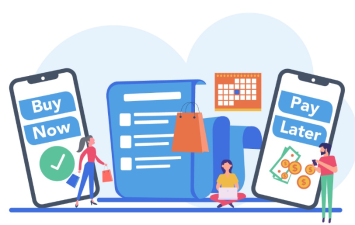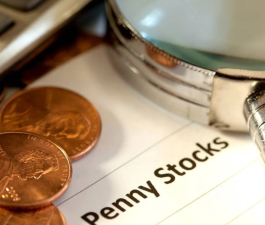Buying things on e-commerce platforms "pay later", ordering takeout "enjoy first and pay later", staying in a hotel "stay first and pay later"... Buy now, pay later, as the name suggests "buy now, pay later", is a consumption method that has emerged in recent years.
This method allows users to experience the product at a price of 0 yuan first, and then pay the money after the user confirms receipt. For hesitant consumers, buy first and pay later is the final push to make an order, "it doesn't cost money anyway, so it doesn't hurt to try it."

Buying things on e-commerce platforms "pay later", ordering takeout "enjoy first and pay later", staying in a hotel "stay first and pay later"... Buy now, pay later, as the name suggests "buy now, pay later", is a consumption method that has emerged in recent years.
This method allows users to experience the product at a price of 0 yuan first, and then pay the money after the user confirms receipt. For hesitant consumers, buy first and pay later is the final push to make an order, "it doesn't cost money anyway, so it doesn't hurt to try it."

The rise of buying first, pay later:
'Buy first, pay later' is a model that allows consumers to try out the product before buying it. This model fundamentally solves the hesitation of consumers when facing choices and lowers the threshold of human decision-making in shopping. Especially on e-commerce platforms, competition is extremely fierce, and merchants need to constantly innovate to attract and retain customers, and 'buy first, pay later' undoubtedly provides them with a new weapon.
The original intention is to let consumers decide whether to pay or return the product after experiencing it, thereby reducing the decision threshold and shopping risks of consumers. Various e-commerce platforms have successively launched the use-now-pay-later service. If consumers are not satisfied with the goods they receive, they can return them directly, eliminating the process of payment and refund.
To a certain extent, buy-now-pay-later has increased the sales conversion rate. The convenient and smooth payment process, the entire purchase process completed unconsciously, and the delayed payment time have greatly reduced the pain of payment, so it is also jokingly called "senseless" payment or "senseless" consumption by netizens. Consumers only need to select the goods and place an order directly with a "slip of the hand".
The so-called "payment pain" refers to the "pain" that people immediately feel when paying, which will reduce the joy people get from consumption. Buy-now-pay-later reduces the payment pain of consumers because of the "no payment", thereby increasing the shopping impulse.
Buy-now-pay-later also takes advantage of the virtual ownership effect. When you see a beautiful cup, you imagine the scene of it being placed on the dining table; when you imagine how beautiful it would be to wear a piece of clothing; when you see a picture of a sea view room with floor-to-ceiling windows, you have already begun to imagine the comfort and pleasure of living in it... This is the embodiment of "virtual ownership". In the process of purchasing goods, people have begun to imagine weaving the item into their lives. The experience-based shopping of buy now pay later has further strengthened people's virtual ownership psychology. Even if some people are not so satisfied with the goods, they will stay because of the mentality of "buy it anyway".
At first glance, the flexibility and convenience of "buy now pay later" is beneficial to three parties: consumers can try a certain product at a low cost, reducing economic pressure and purchase risks; improving sales conversion rate, which is also good for merchants; platforms use this model to gain customers and increase traffic.
However, this model is also controversial on social platforms. People often ask for help on various platforms, including but not limited to "the payment method inexplicably becomes pay later" and "how to close the pay later platform".
Consumers have two main concerns about pay later. First, in the absence of the pain of payment, it is easy to overspend and forget to return the goods. Second, when consumers open the use-before-pay-later service, the platform often prompts them, but it is not quick to close the channel. Many netizens are worried that the elderly will cause losses due to misoperation, and they will also feel uneasy because they lose control of the entire shopping process.
For merchants, in recent years, e-commerce platforms have been fiercely competitive, consumer demands have diversified, and the overall cost of acquiring customers has been on the rise. Services such as buy-before-pay, freight insurance, and 7-day no-reason returns have pushed up the operating costs of merchants. In order to prevent returns caused by buy-before-pay, merchants need to work hard on services, describe products as accurately as possible, and patiently answer consumer inquiries.
As e-commerce competition moves into the deep waters, the original model of simply grabbing consumer traffic is gradually not feasible. As a bridge connecting consumers and merchants, the role of e-commerce platforms is crucial. Not only should we pay attention to balancing the rights and interests of both merchants and consumers, but we also need to ensure the smoothness of the product experience. Perfect the channels for consumers to open and close services, "buy-before-pay" and "0 yuan payment" can be "one-click to open" or "one-click to close", so that this service can truly reflect the original intention of convenience and speed. Virtual ownership effect
'Buy-before-pay' also utilizes the virtual ownership effect. When consumers choose goods, they often imagine the scenes of the goods being placed in their lives. This psychological phenomenon makes them more inclined to buy. In the "buy first, pay later" model, consumers are given a kind of psychological ownership. Even before they confirm the purchase, they have begun to imagine various situations after using the product. This mentality has invisibly enhanced their desire to buy, so that many consumers will choose to keep the goods even if they are not very satisfied with the goods after the experience because of the mentality of "buy it all".
Consumers' concerns
However, the popularity of "buy first, pay later" is not without concerns. First, the lack of "payment pain" experience may lead to excessive consumption by consumers. While enjoying the convenience brought by "buy first, pay later", we must also realize that delayed payment may lead to unnecessary expenses and impulse purchases. In addition, when consumers choose to activate this service, they are often not easy to realize the subsequent repayment responsibilities, especially some young consumers and the elderly are prone to misunderstanding this process.
Secondly, consumers' concerns about return agitation are also increasing. Under the "buy now, pay later" model, some consumers may find the return process simple, but in fact, many people will fall into the contradiction between returning and keeping the goods because of the gap between their expectations and actual feelings of the goods. This mentality will cause some people to choose not to return the goods because of fear of trouble, even if they are not actually satisfied.
Impact on merchants
For merchants, although "buy now, pay later" has significantly increased the conversion rate, it also brings additional operating costs. Due to intensified competition, merchants need to increase investment in product descriptions, customer service support, etc. in order to avoid high return rates, so as to ensure that consumers get sufficient information before purchasing. This often means higher labor costs and time costs. In addition, merchants must find a balance between "buy now, pay later" and the traditional sales model to maximize profits.
Role of the platform
E-commerce platforms play an indispensable role in this new model. They not only need to provide a safe and convenient payment and return process, but also need to ensure fairness and transparency between merchants and consumers. To this end, the platform needs to set up more intuitive opening and closing functions for users to ensure that consumers can experience real convenience during use.
Conclusion: Future Outlook
In summary, the rise of "buy now, pay later" in the e-commerce field is the result of the combined effect of technology and consumer demand. It provides consumers with greater flexibility and convenience, and also provides merchants with new sales channels. However, the sustainable development of this model still needs to face a series of challenges such as consumer management and education, and optimization of merchant burdens.
In this rapidly changing business environment, the joint game between e-commerce platforms, merchants and consumers will continue to have a profound impact on the market structure. In the future, through the balance of continuous innovation and responsibility, the "buy now, pay later" model may be able to promote the improvement of consumer experience while achieving a healthier development of the e-commerce industry.


